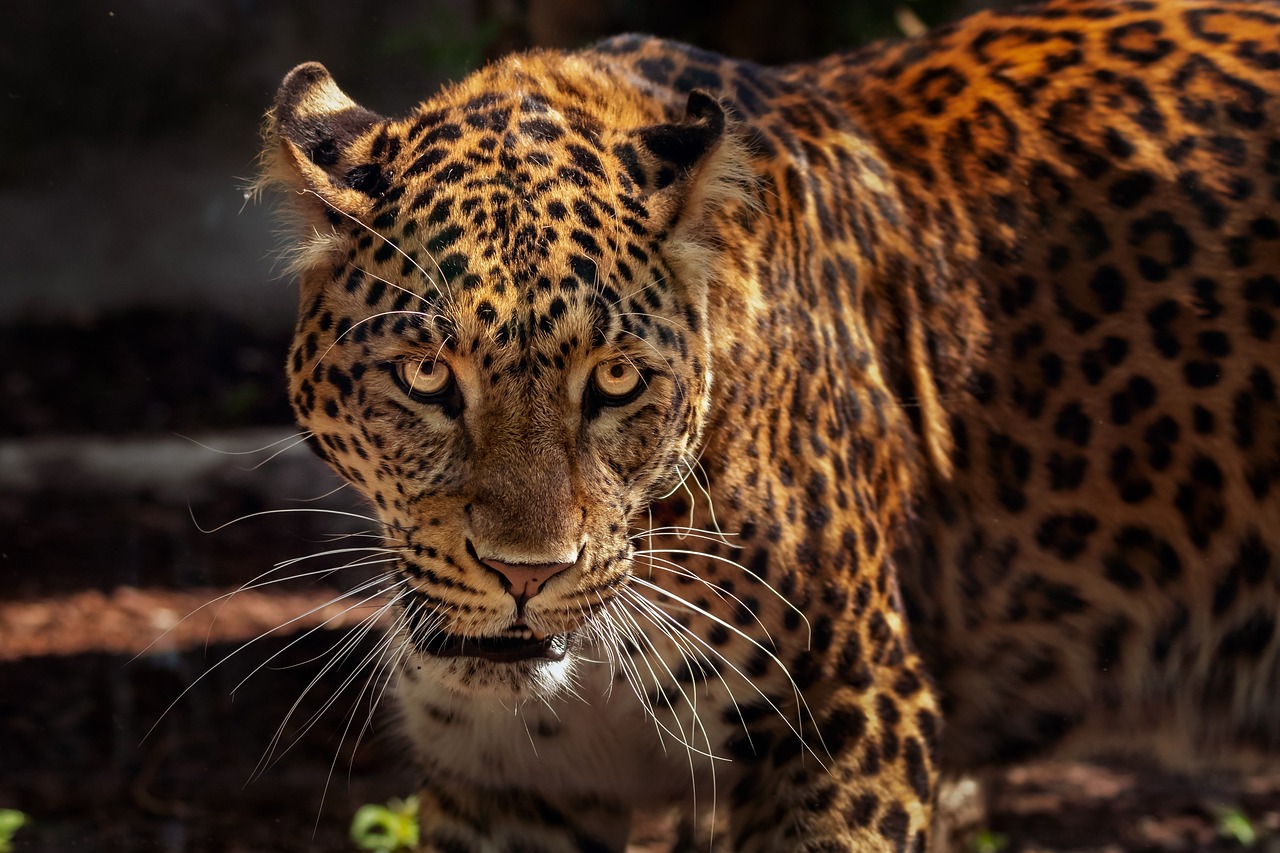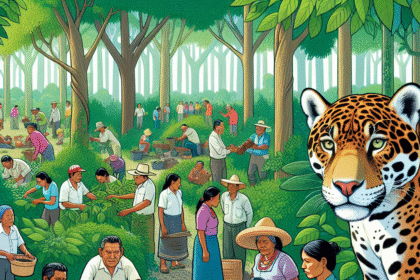Raising Awareness: Grassroots Efforts in Tulum for Jaguar Safety
Understanding the Jaguar’s Role
The jaguar (Panthera onca) is not only an iconic species of the Yucatán Peninsula but also a keystone predator that plays a crucial role in maintaining the ecological balance of its natural habitat. Tulum, with its stunning landscapes, rich biodiversity, and unique ecosystems, serves as a vital habitat for these majestic cats. Effective conservation initiatives are essential for their survival and require a collective effort from communities, local organizations, and ecological initiatives.
The Current Threats to Jaguars
Despite their importance, jaguars face numerous threats in Tulum, primarily driven by human activity. Urbanization, habitat destruction due to tourism development, and poaching are significant factors endangering these magnificent creatures. Furthermore, road construction fragments their habitat, making it challenging for them to hunt and breed. Raising awareness about these threats is paramount for fostering community support and protecting jaguar populations.
Grassroots Organizations Leading the Charge
Grassroots organizations play an essential role in Tulum’s conservation efforts. Many non-profits focus on educating local communities about the ecological significance of jaguars. One of these organizations, the Tulum Jaguar Protection Society, conducts workshops and community outreach programs. They engage locals in discussions about the importance of maintaining biodiversity and the positive impact of preserving jaguar populations on tourism.
Educational Campaigns in Local Schools
Education is a cornerstone of jaguar protection. Local schools are integrating more lessons focused on wildlife conservation, with an emphasis on the ecological role of jaguars. Initiatives such as “Adopt a Jaguar,” which allows students to symbolically adopt a jaguar and learn about its habitat and behaviors, have gained popularity. Interactive activities include storytelling sessions that introduce children to the myths and legends surrounding jaguars in Mayan culture, linking tradition with conservation.
Community Involvement
Involving the local community is key to the success of jaguar conservation efforts. Collaborations with local fishermen, farmers, and tour guides to promote sustainable practices have shown promise. These stakeholders can help monitor jaguar movements and deter poaching through ethical practices. Workshops teach locals how to coexist peacefully with jaguars, emphasizing their role in maintaining healthy ecosystems, thus encouraging a protective attitude towards these animals.
Ecotourism as a Tool for Conservation
Ecotourism serves as an effective tool for raising awareness and generating funds for jaguar conservation projects. Responsible tourism practices promote wildlife-guided tours that highlight the importance of safeguarding jaguar habitats. Visitors who participate in eco-friendly tours gain insights into the significance of jaguars, learning how they impact the overall health of the forest ecosystems. Funds generated from these tours often go directly into conservation efforts, making it a mutually beneficial setup for both the local economy and jaguar preservation.
Leveraging Social Media for Awareness
Social media platforms have become powerful tools for spreading awareness about jaguar safety. Grassroots organizations use these platforms to share impactful stories, photos, and videos that highlight the beauty and significance of jaguars. Campaigns like “#SaveTheJaguar” have gone viral, increasing visibility and attracting international attention. Engaging content that includes tips on how to minimize human-jaguar conflicts while advocating for sustainable tourism practices fosters a sense of global responsibility towards jaguar preservation.
Collaboration with Researchers and Wildlife Experts
Collaborating with researchers and wildlife experts enhances grassroots efforts to protect jaguars. These partnerships often lead to more effective data collection regarding jaguar populations, distribution, and behaviors. Scientific studies supply valuable data that informs community initiatives, allowing localized solutions to be developed based on empirical evidence. This collaboration often results in systematic conservation plans that ensure long-term sustainability of jaguar habitats.
Cultural Significance of Jaguars
In Mayan culture, jaguars symbolize power and the spiritual connection between the earth and the cosmos. Various grassroots efforts emphasize this cultural significance, portraying the jaguar as more than just a wildlife species but a vital part of local heritage. Cultural events, art exhibits, and storytelling evenings centered around jaguars can ignite local pride and motivate communities to take action for their preservation.
Addressing Wildlife Crime
Addressing wildlife crime is a critical aspect of jaguar conservation. Grassroots organizations work closely with local law enforcement to combat poaching and illegal wildlife trafficking. Community awareness campaigns educate locals about the legal repercussions of poaching and the importance of reporting any suspicious activities. Building trust between organizations and communities ensures a more effective response to threats against jaguars.
Creating a Network of Protectors
Forming a network of “Jaguar Protectors” constitutes a remarkable grassroots initiative where community volunteers dedicate time to monitor and report on local jaguar populations. This network promotes a sense of ownership and responsibility among community members, strengthening their ties to the environment. Training programs equip volunteers with the necessary skills to collect data and report sightings, ensuring that jaguar habitats are respected and safeguarded.
Using Art and Public Installations
Art has emerged as a compelling medium for raising awareness about jaguar conservation. Local artists have created murals depicting jaguars, which serve as visual reminders of the importance of conservation efforts. Public installations featuring jaguar-themed artwork encourage discussions around the species and foster community engagement. The impactful nature of art can transcend linguistic barriers, making it accessible to all community members.
Monitoring Technology for Conservation
The implementation of modern technology, such as camera traps and GPS tracking devices, aids grassroots conservation efforts. These tools allow for real-time monitoring of jaguar populations, providing critical data necessary for formulating effective conservation strategies. Community members are trained on how to use these technologies, engaging them actively in the conservation process and promoting a sense of empowerment.
Future Directions
As awareness efforts grow, focusing on policy advocacy and regional collaboration becomes crucial. Grassroots organizations are increasingly involved in discussions that shape local legislation concerning wildlife conservation. Engaging local governments encourages the establishment of protective laws and the enforcement of regulations that safeguard jaguar habitats, ensuring their continued survival in Tulum and neighboring regions.
Building Partnerships for Sustainability
Sustainable partnerships among grassroots organizations, government agencies, and academic institutions can lead to more integrated conservation strategies. By aligning their goals and resources, these groups can form a united front in the fight for jaguar safety. Such cooperation enhances the effectiveness of awareness campaigns, research initiatives, and community engagement efforts.
The Impact of Successful Conservation Efforts
The success of grassroots conservation efforts in Tulum generates a ripple effect throughout Mexico and beyond. By establishing robust models for community engagement and education, these initiatives inspire similar projects in other regions facing challenges with wildlife conservation. The collective commitment to raising awareness about jaguar safety fosters a broader culture of conservation across the globe, emphasizing the need for collaborative efforts in protecting our planet’s biodiversity.







